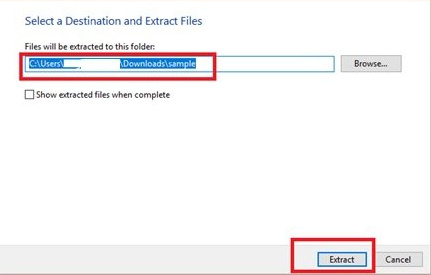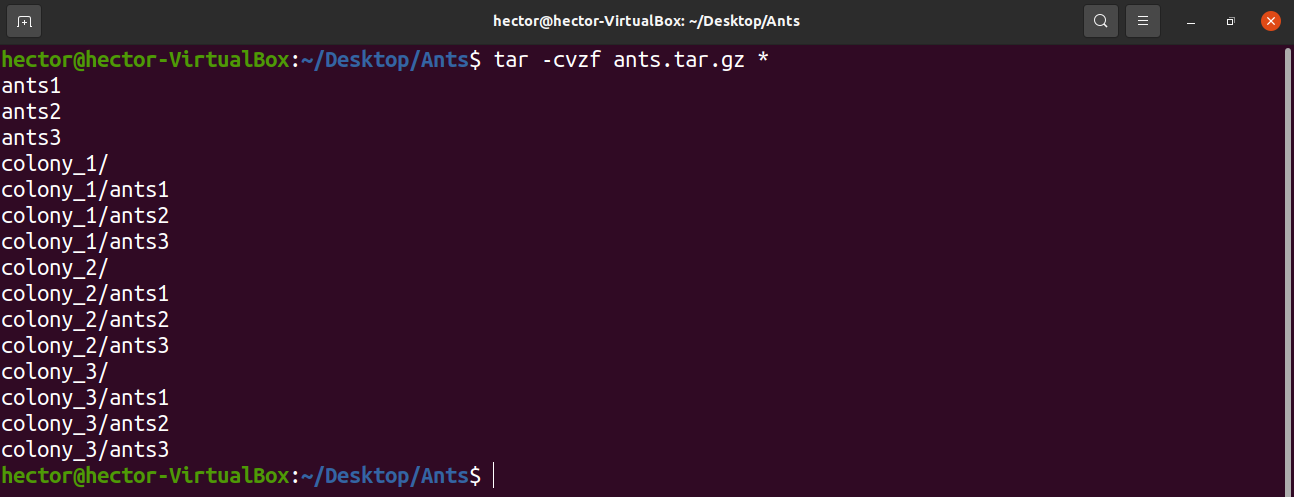

i.e cvf for archive creation, cvfz for compressed gzip archive creation, cvfj for compressed bzip2 archive creation etc., For this method to work properly, don’t give – in front of the options.Ĭreating a bzipped tar archive using option cvjfĬreate a bzip2 tar archive as shown below: $ tar cvfj archive_2 dirname/ Note: I like to keep the ‘cvf’ (or tvf, or xvf) option unchanged for all archive creation (or view, or extract) and add additional option at the end, which is easier to remember. To use a gzip compression on the tar archive, use the z option as shown below. The above tar cvf option, does not provide any compression. v – verbosely list files which are processed.Ĭreating a tar gzipped archive using option cvzf.

This is the basic command to create a tar archive. Creating an archive using tar command Creating an uncompressed tar archive using option cvf
Linux untar gz how to#
In this article, let us review various tar examples including how to create tar archives (with gzip and bzip compression), extract a single file or directory, view tar archive contents, validate the integrity of tar archives, finding out the difference between tar archive and file system, estimate the size of the tar archives before creating it etc.,ġ. Understanding various tar command options will help you master the archive file manipulation. If you find this guide helpful or have more information or additional ideas, you can give me a feedback by posting a comment.On Unix platform, tar command is the primary archiving utility. That is it with extracting tar files to a specific directory and also extracting specific files from a tar file. Img 05: Extract Specific Files From Tar Archive Summary # tar -xvf etc.tar etc/issue etc/nf etc/mysql/ -C /backup/tar_extracts/ In the next example, I will extract specific files out of a tar file to a specific directory as follows: # mkdir /backup/tar_extracts The tar utility also allows you to define the files that you want to only extract from a. Img 04: Extract tar.bz2 Files to Different Directory Example 4: Extract Only Specific or Selected Files from Tar Archive # tar -jvxf documents.tbz2 -C /tmp/tar.bz2/ Now we will be unpacking the documents.tbz2 files to /tmp/tar.bz2/ directory. tbz2 Files to Different DirectoryĪgain repeating that you must create a separate directory before unpacking files: # mkdir -p /tmp/tar.bz2 tgz Files to Different Directory Example 3: Extract tar.bz2. Now we will extract the contents of documents.tgz file to separate /tmp/tgz/ directory. tgz Files to Different Directoryįirst make sure that you create the specific directory that you want to extract into by using: # mkdir -p /tmp/tgz Img 02: Extract Tar Files to Specific Directory Example 2: Extract. # tar -xvf articles.tar -directory /tmp/my_articles/

Let me also use the -directory option instead of -c for the example above. In the above example I used the -v option to monitor the progress of the tar extraction. Img 01: Extract Tar Files to Different Directory To extract the files in articles.tar to /tmp/my_article, I will run the command bellow: # tar -xvf articles.tar -C /tmp/my_article/ You can include the -p option to the above command so that the command does not complain. Let me start by creating the /tmp/my_article directory using the command below: # mkdir /tmp/my_article Always make sure that the directory into which you want to extract tar file exists. In the first example, I will extract the files in articles.tar to a directory /tmp/my_article. Example 1: Extracting tar Files to a Specific Directory


 0 kommentar(er)
0 kommentar(er)
